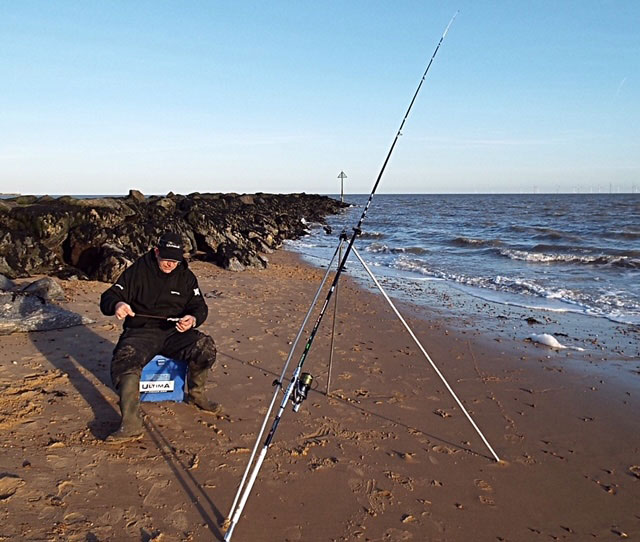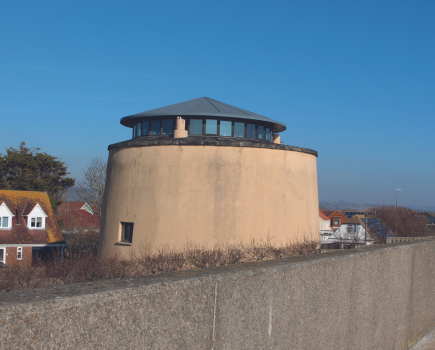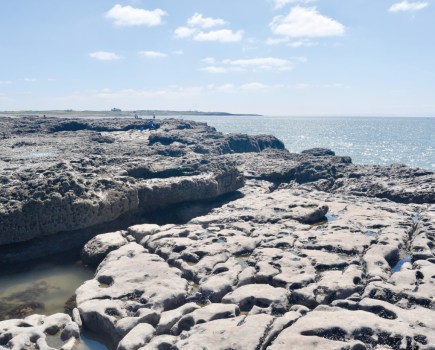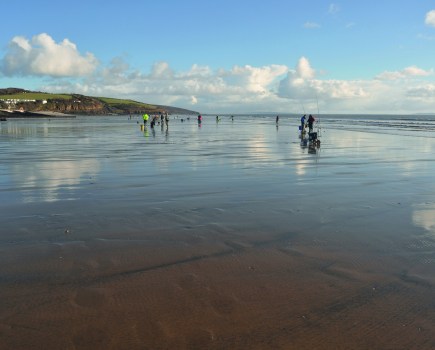Mainly considered summer venues, these Essex beaches can still provide decent all-year fishing
Words and photography by John Popplewell
These beaches are both classed as fairly shallow and are renowned for their summer fishing, particularly for bass, with stingrays caught at St Osyth.
At Jaywick, there are long rock breakwaters which have become havens for bass, where fish of more than 10lb have been caught in recent years. The St Osyth beaches, which are noted for stingrays and some big bass, begin with short breakwaters that stretch no more than 30 yards out to sea. To the south, this opens up into a long shallow beach stretching to the Colne Point Nature Reserve.
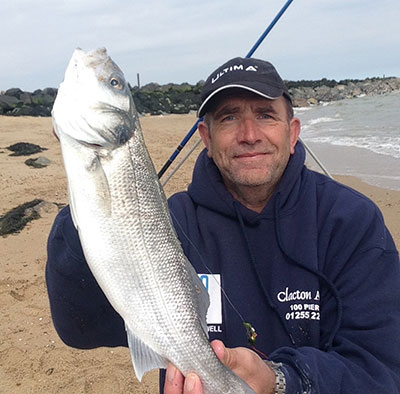
John with a bass
SEASONAL SPECIES
Bass are mainly caught here in summer and autumn, but you can expect thornback rays throughout the year, and soles from May to October.
The stingrays turn up in early May and are caught until the end of June, although the odd one can be taken through to September. Rays in excess of 60lb are regularly caught around the Nature Reserve area.
Autumn and winter see the whiting appear. There has been a demise in cod stocks and very few are caught from the Jaywick area. Winter produces thornback rays from all the St Osyth beaches, along with dabs and whiting.
TACTICS
Bass can provide good sport on a light spinning rod matched with a suitable fixed-spool reel loaded with mono or braid. These bass seem to take most types of lures. Dexter wedges or similar work well for casting that little bit further when needed, or surface poppers can make for exciting sport.
The bass tend to feed as the tide starts to flood and will continue to be caught until it eases. Once the ebb is running, they will feed again. If you don’t fancy lure fishing, then a ragworm fished on a running leger on a size 1/0 hook will also catch bass.
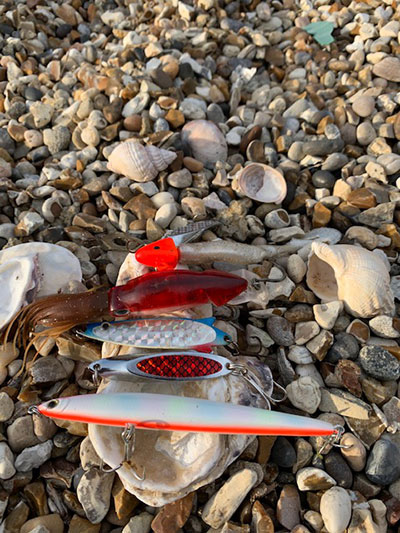
Various lures for bass
Soles will take ragworm or lugworm baits after dark with just a 50-yard cast. Squid and bluey are the favoured baits for thornback rays. On days when the rays are feeding further out, try a clipped-down rig with a sandeel bait whipped on tightly with elastic cotton.
Use ragworm baits when seeking the big stingrays, although in recent years calamari squid has also seen a few caught too.
The tide run here on the first of the ebb can be strong so six-ounce breakout leads are the minimum, but after the first couple of hours it is quite fishable again.
CASTING
There is no need to cast too far when fishing for bass because most of the fish are feeding within 50 metres of the shoreline. A ragworm baited on a size 1/0 or 2/0 hook on a long flowing trace can be deadly.
Bait-robbing crabs can be a nuisance during the summer, especially with ragworm baits. A top tip here is to use elastic cotton to bind on all baits, which gives you a few extra minutes of fishing on each cast.
For the autumn whiting, use light tackle and a flapper rig with two or three hooks baited with fish bait or lugworms. Expect some big bass to be chasing the whiting shoals, so it is always worth fishing a second rod with a big fish bait, such as half a mackerel or bluey, cast into the surf.
NEED TO KNOW
GETTING THERE
Take the A12 for Clacton-on-Sea. St Osyth village is two miles south-west of Clacton. Follow signs for Hutley’s caravan park, where there is a free carp ark adjacent to the Sailor Boy public house. The beach is on the other side of the seawall.
At St Osyth, it is a good 20-minute walk along the shoreline to reach the nature reserve.
TACKLE SHOPS
Clacton Angling, 100 Pier Avenue, Clacton, CO15 1NG, tel: 01255 221863.
Dean’s Tackle & Guns, 43 Pallister Road, Clacton, tel: 01255 425992.
Meta-Lite Fishing Tackle, 15 Newgate Street, Walton-on-the-Naze, tel: 01255 675680.
Toosey Tackle, Church Square, St Oysth, CO16 8NU, tel: 01255 820932.

